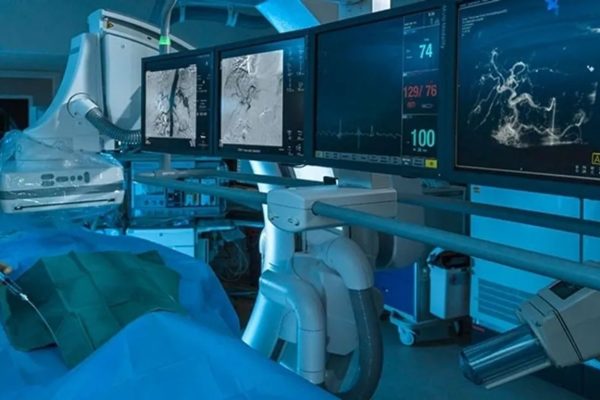Interventional Procedures

Interventional Procedures
A minimally invasive diagnostic, therapeutic, or biopsy technique is known as an “interventional procedure.” A radiologist performs interventional procedures by traversing through or around the body with instruments under live imaging control, employing radiological imaging guidance in the form of x-ray, ultrasound, or CT to guide or target the examination. Interventional radiological techniques are less intrusive than open surgery and are frequently done on the same day.
Here Are Some Services Include !
Biopsies are medical procedures performed to obtain samples of tissue or cells from the body for examination and analysis. They are crucial for diagnosing various diseases, determining the nature of abnormalities, and guiding treatment decisions. Biopsies can be performed on different parts of the body, depending on the suspected condition or area of concern.
Fine Needle Aspiration Cytology (FNAC) is a simple, rapid, and low-cost procedure for sampling superficial and deeper masses, such as those found in the neck, abdomen etc. It is commonly done in an outpatient clinic. It causes the patient minimal discomfort and has a low risk of consequences. This technique can easily diagnose masses in the head and neck region, such as salivary gland and thyroid gland abnormalities.
The procedure of draining fluid from peritoneal cavity is known as paracentesis. A procedure that uses a hollow needle or catheter to remove fluid from a bodily cavity or cyst is called a paracentesis. A thoracentesis is the paracentesis of the thoracic cavity.
An interventional radiologist places a small needle into the abscess under imaging guidance (ultrasound, CT scan or fluoroscopy) to retrieve a sample of the contaminated fluid from an area of the body such as the chest, abdomen, or pelvis. The abscess fluid is then drained using a tiny drainage catheter. It may take many days to drain all of the fluid. Percutaneous abscess drainage is a procedure that removes infectious fluid from the body, usually from the belly and pelvis.
P.T.B.D. stands for percutaneous transhepatic biliary drainage. Biliary treatments are used to treat obstructions, narrowing, and/or injuries to the tubes that connect the liver, gallbladder, and small intestine. Bile ducts are the names for these passageways. Bile is a fluid produced by the liver and stored in the gallbladder. To aid digestion, the gallbladder discharges bile into the small intestine. If the bile ducts get clogged, the entire biliary system may become inflamed or infected. Cholangitis is the medical term for this. Biliary interventions unblock the blocked bile ducts, remove excess bile outside the body, and restore bile flow within the biliary system.
Why Choose us?
Choosing us over other, Navya Diagnostics have such world class facilities and doctors which you won’t get anywhere.
This hospital is not only a treatment center, in fact it’s a hope for many. We do our best in treating the patients. We know what the requirements of a patient are and to reduce extra burden, we keep working for their good health and quick recovery.
w
We gives you the best healthcare solutions.
If you have any query or want to share problems or any emergency, contact us without hesitation..
